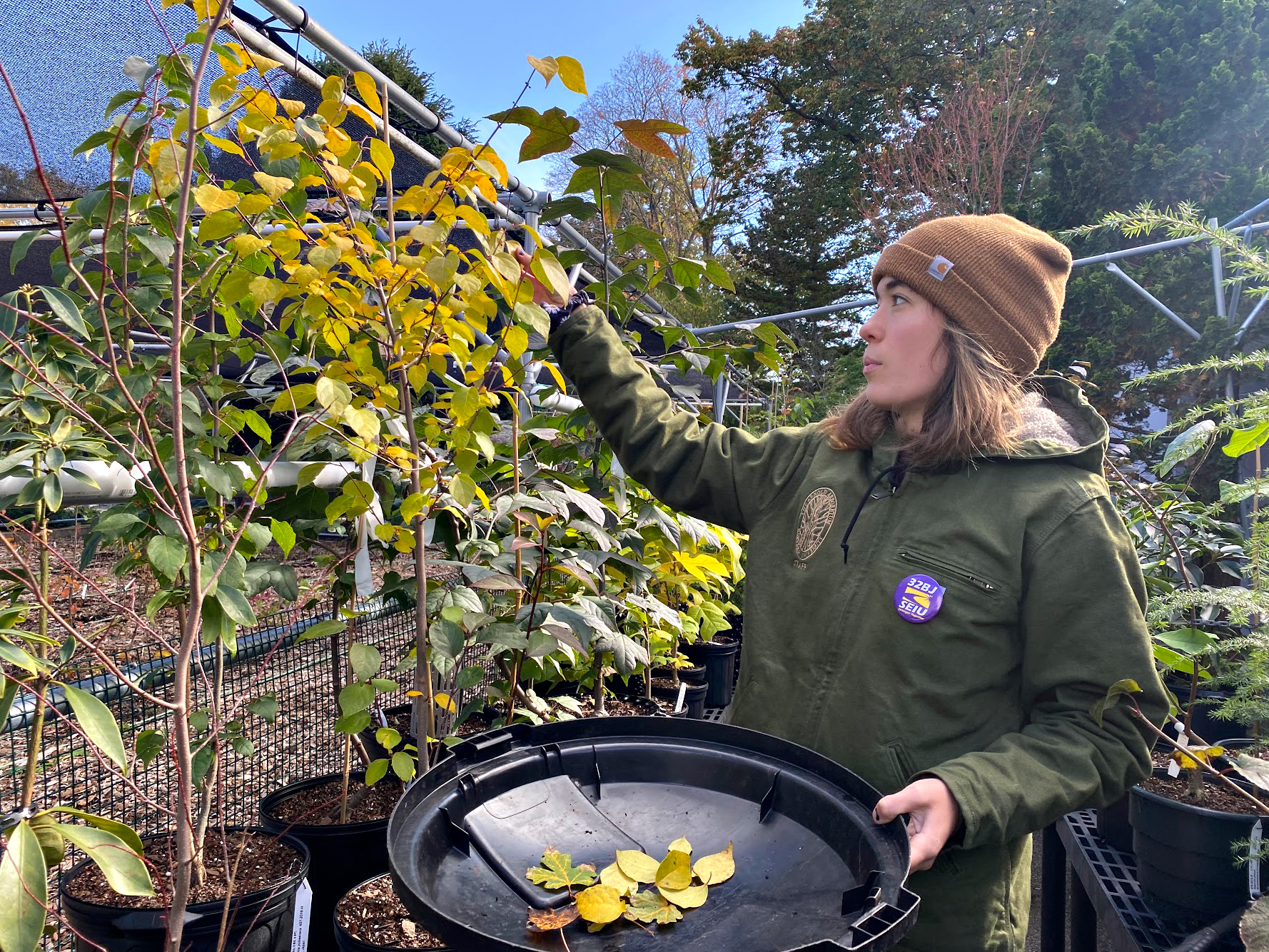Every November, the plant production crew moves our containerized plants into the cold storage building for the winter. There, the plants are kept just above freezing and sheltered from harsh winds and snow, until it is time to take them back outside in April. Unlike the plants in our in-ground nurseries, these potted plants don’t have insulation around their root systems and could therefore be killed by freezing temperatures if kept outside. The cold storage building also refrigerates the plants during unseasonably warm winter days. An environment of complete darkness sends a strong message to the plants that they are meant to be hibernating.
Before the plants are brought inside, we remove their remaining leaves in order to prevent the collection of leaf litter inside the building, which could harbor disease. The introduction of rolling plant shelves—in place of stationary ones—transformed the moving process and made watering easier as well. The entire collection is checked for water once a week and monitored for pests and diseases. After three or four cycles through this winter moving process, these plants will graduate to the landscape, where they will experience a real Boston winter.
1,000
Approximate number of plants in cold storage
34-36° F
Storage temperature range
Emily Hitchcock is a Greenhouse Gardner at the Arnold Arboretum.
